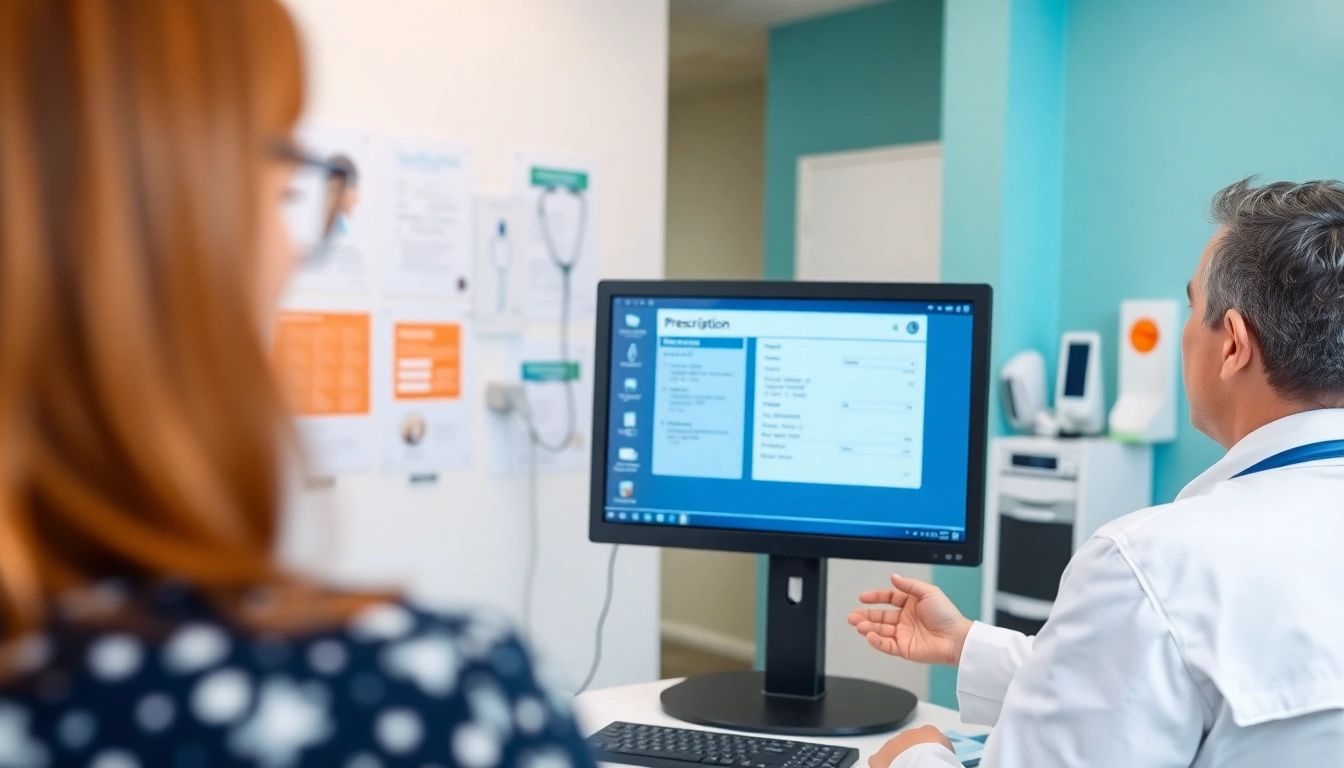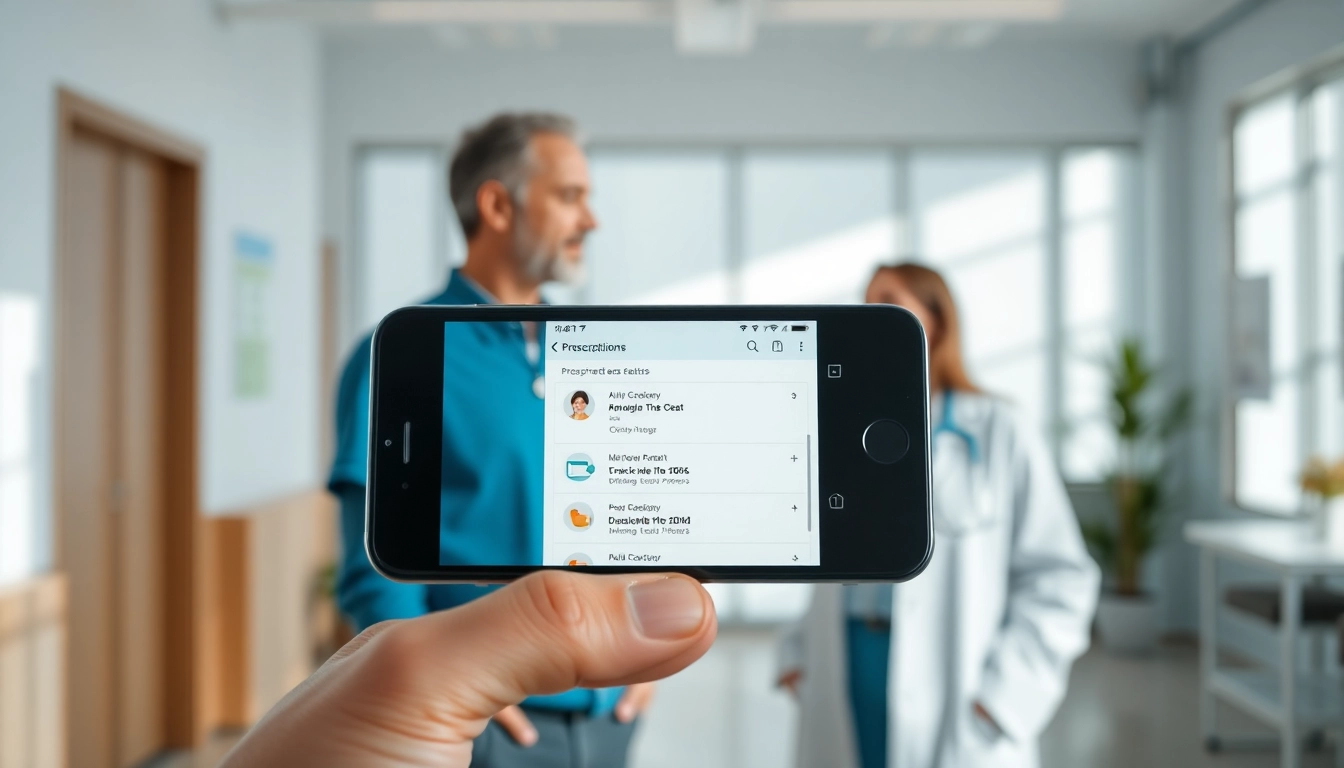An Introduction to E-Prescribing
What is E-Prescribing?
E-prescribing, or electronic prescribing, is the process by which healthcare providers send prescriptions directly to pharmacies through the internet. This method replaces the archaic use of paper prescriptions, faxes, or phone calls, offering a more streamlined and efficient way for patients to receive their medications. According to healthcare guidelines, e-prescribing not only enhances workflow efficiencies but also improves medication accuracy, safety, and patient outcomes.
The Importance of E-Prescribing
The significance of e-prescribing lies in its ability to minimize medication errors, streamline communication between healthcare providers and pharmacies, and ultimately enhance the patient experience. Traditionally, prescription errors were often due to illegible handwriting, misunderstood oral prescriptions, or incomplete information. E-prescribing mitigates these risks by ensuring that prescriptions are clear, accurate, and readily accessible. As the healthcare industry continues to embrace digital solutions, understanding how does eprescribing work becomes even more crucial for improving overall healthcare delivery.
Differences Between Traditional and E-Prescribing
Traditional prescribing methods rely heavily on paper-based systems, which are prone to several issues, including lost prescriptions and delayed communication. In contrast, e-prescribing enables instantaneous transmission of prescription data directly to pharmacies, reducing the potential for errors and delays. Furthermore, e-prescribing systems often integrate seamlessly with electronic health records (EHRs), allowing providers to access comprehensive patient medication histories and potential drug interactions, which significantly enhances patient safety.
How Does Eprescribing Work?
The Process of E-Prescribing
The e-prescribing process involves several key steps that facilitate a seamless flow of information from healthcare providers to pharmacies. Initially, a provider inputs medication details into a certified e-prescribing system, selecting the appropriate drug, dosage, and instructions. This information is then electronically transmitted to a pharmacy of the patient’s choice, where it can be accessed promptly.
Once the pharmacy receives the prescription, they will verify the information, check for any potential drug interactions or allergies using the patient’s medication history, and prepare the order for the patient. The patient is then informed that their prescription is ready for pickup or delivery, which enhances both convenience and adherence to treatment plans.
Key Technologies Involved
E-prescribing relies on a sophisticated network of technology to function effectively. Key components include:
- EHR Systems: Electronic health records store comprehensive patient data, including demographics, allergies, and medication history, which informs prescription decisions.
- e-Prescribing Software: This software enables healthcare providers to create, modify, and send electronic prescriptions securely. Many of these systems are integrated with EHRs for seamless communication.
- Pharmacy Management Systems: These systems receive e-prescriptions from providers, allowing pharmacists to verify and fill prescriptions efficiently.
- Interoperability Standards: Various standards and protocols ensure that e-prescribing systems can communicate effectively with each other, allowing for smooth information transfer across platforms.
Understanding Security and Compliance
With the rise of e-prescribing comes the necessity of adhering to stringent security and compliance regulations. Regulations such as the Health Insurance Portability and Accountability Act (HIPAA) ensure that patient information is kept secure. E-prescribing systems are required to implement strong encryption methods, secure user authentication processes, and vigilant data monitoring to prevent unauthorized access.
Compliance with state and federal regulations is paramount. Many states have specific laws regarding the electronic transmission of prescriptions, including requirements for electronic signatures. Ensuring that e-prescribing systems meet these legal prerequisites is crucial for healthcare providers to avoid legal repercussions and maintain patient trust.
Benefits of E-Prescribing for Patients
Improved Medication Accuracy
One of the most notable benefits of e-prescribing is the significant reduction in medication errors. Utilizing a standardized electronic format minimizes misunderstandings that can arise from handwritten prescriptions. E-prescribing confirms the correct medication is selected based on the patient’s medical history and current medications, reducing the likelihood of adverse drug events.
Convenience and Efficiency
With e-prescribing, patients experience enhanced convenience as they can receive their medications without unnecessary delays. By sending prescriptions electronically, pharmacists can begin preparing a patient’s medication before they arrive at the pharmacy, significantly reducing waiting times. Additionally, patients can choose their preferred pharmacy, which increases accessibility.
Enhanced Communication with Healthcare Providers
E-prescribing facilitates more effective communication between patients and their healthcare providers. Patients can communicate any questions or concerns about their prescriptions directly through the e-prescribing platform, leading to timely clarifications and adjustments. This transparency helps to foster a collaborative patient-provider relationship, enhancing patient satisfaction and adherence to prescribed regimens.
Benefits of E-Prescribing for Healthcare Providers
Streamlining the Prescription Workflow
E-prescribing streamlines the workflow of healthcare providers by reducing the time spent on paperwork and administrative tasks. By automating the prescription process, providers can dedicate more time to direct patient care rather than managing physical prescriptions. This improved efficiency can enhance the overall quality of healthcare delivery.
Reducing Errors and Increasing Patient Safety
Healthcare providers can significantly reduce the potential for medication errors through e-prescribing. The built-in checks within e-prescribing systems alert providers to potential drug interactions, allergies, and contraindications. These safety features ensure that patients receive appropriate medications tailored to their individual health needs.
Access to Patient Medication History
E-prescribing offers healthcare providers easy access to comprehensive patient medication histories. This information is vital for making informed prescribing decisions and understanding the context of the patient’s treatment regimen. Having a complete view of a patient’s past medications helps providers identify any potential issues that may arise and tailor treatments accordingly.
Challenges and Considerations in E-Prescribing
Potential Barriers to Adoption
While the benefits of e-prescribing are clear, several barriers may hinder its adoption in certain healthcare settings. These can include the initial costs associated with acquiring and implementing e-prescribing software, resistance from some healthcare providers accustomed to traditional methods, and concerns regarding the security and privacy of patient data.
Technological Limitations and Solutions
Technological limitations can pose challenges, particularly for smaller healthcare practices that may not have the resources to invest in e-prescribing systems. However, evolving cloud-based solutions and software-as-a-service (SaaS) options are emerging to bridge this gap, providing more affordable e-prescribing solutions without the need for hefty infrastructure investments.
Future Trends and Innovations in E-Prescribing
The future of e-prescribing is bright, with ongoing innovations aimed at enhancing its functionality and integration. These trends include the continued development of artificial intelligence (AI) and machine learning to predict patient needs, increasing the accuracy and personalization of prescriptions. Additionally, interoperability among health systems will enhance data sharing capabilities, making e-prescribing an even more powerful tool in modern healthcare.



